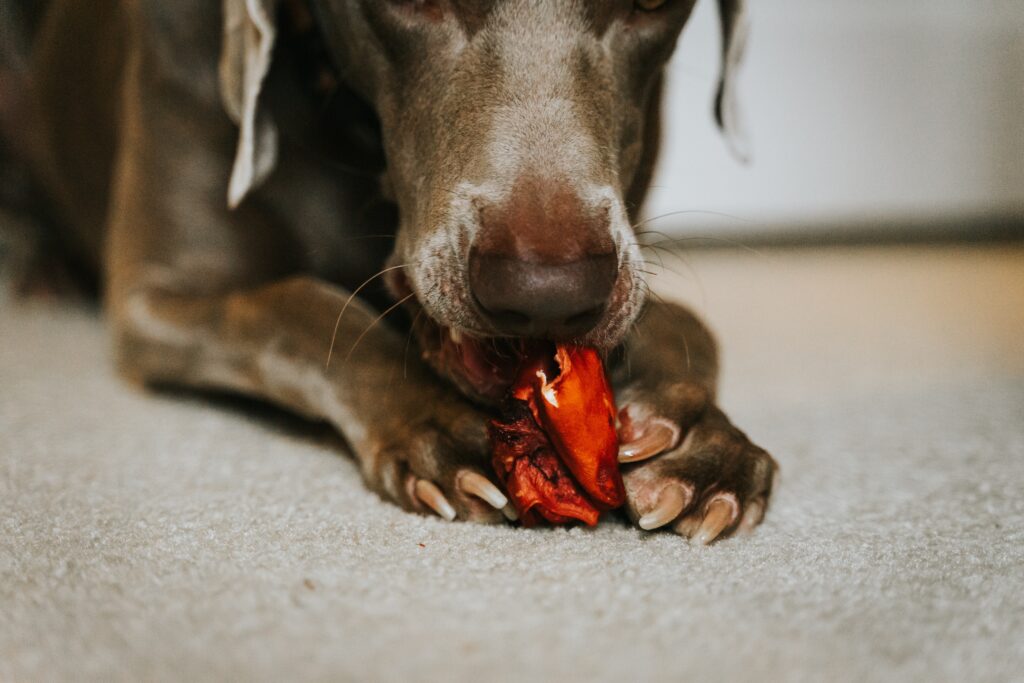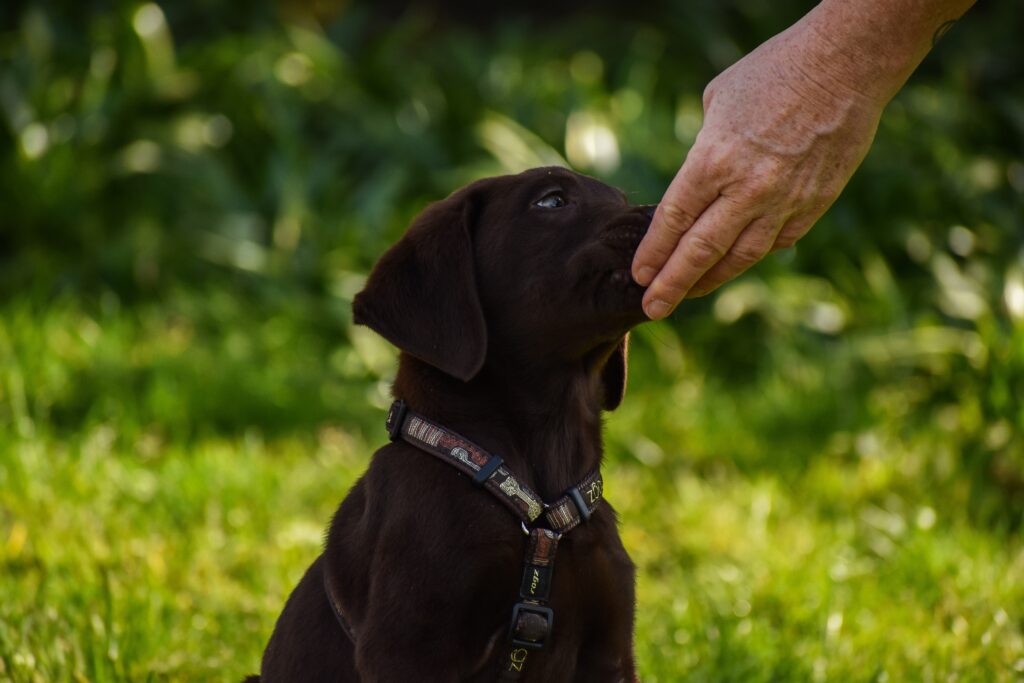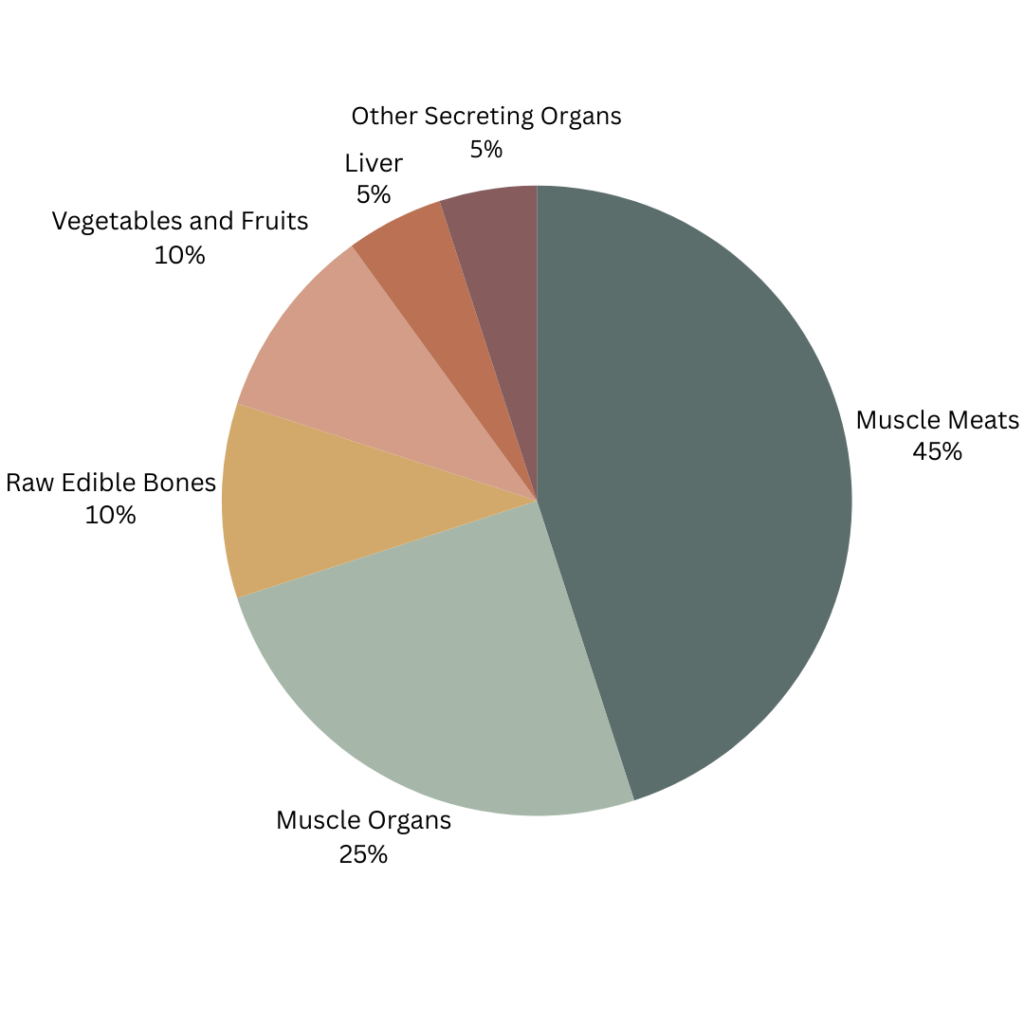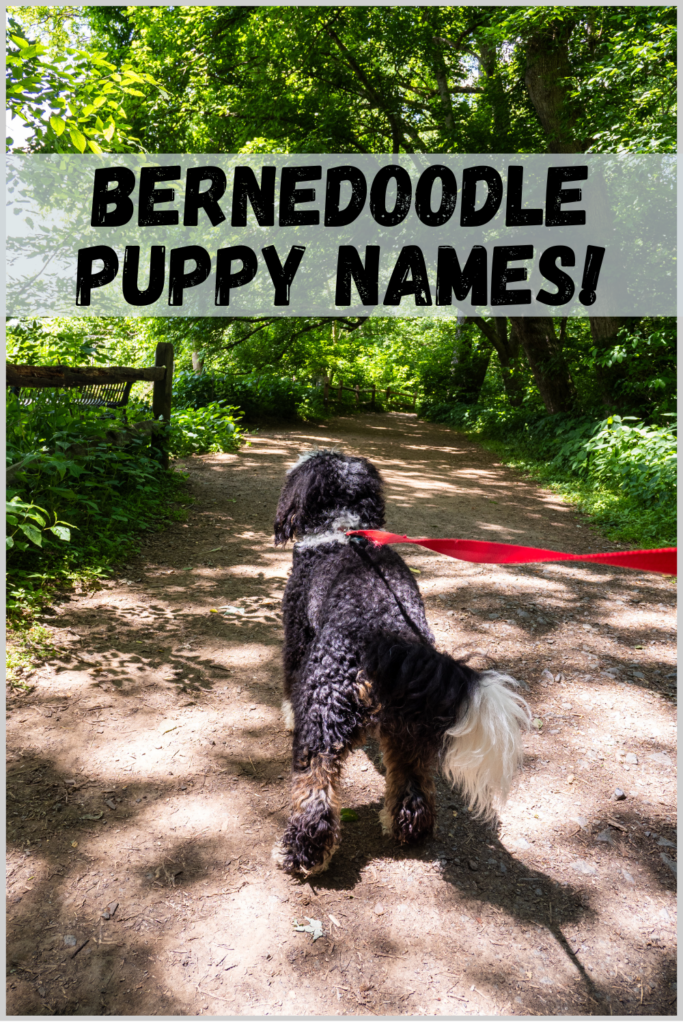
Raw Food Dog Diet Plan: Create a Balanced Meal & FREE Planner
Are you confused about how to begin feeding your dog a raw food dog diet? Don’t worry, this post will go over everything you need to get started, introduce the ultimate beginner-friendly shopping list, and introduce an invaluable resource for how to create a balanced raw food dog diet plan.
It can get complicated and there is a decent amount of math involved. I could come on here, write some general numbers, and tell you to eyeball it… But that’s not how I roll.
Creating a balanced diet is SO important to your furry friend’s health in the long run. Without a balanced diet, your dog can develop a myriad of issues including skin and coat health, metabolism, and overall development. When starting, it’s okay to mess up here and there. But, learning how to calculate these numbers will ultimately give you long-term success with raw food feeding and ensure your dog is getting the right nutrition to live a long, happy, and healthy life.
As always, we strive to bring you up-to-date, research-based information on dog diet, health, and nutrition, to give your furry best friend the long life they deserve.
This post is all about creating a balanced raw food dog diet plan (+ a free recipe planning worksheet at the end).

History of Raw Dog Food
Raw dog food has gained a lot of popularity in the recent decade. It’s based on the idea that dogs used to eat differently in the wild before they were domesticated. This is sometimes called an evolutionary diet and includes raw meats, vegetables, and anything you can find in the wild.
Raw feeders insist that giving their dog raw food helps with a ton of health factors like skin and coat health, energy levels, digestive issues, and joint support.
Though, I wish I could say that these were all proven, they are not. Studies have shown that giving a raw diet helps with digestive issues, but there has not been enough research on the other benefits mentioned above.
There is an issue with bacteria, that needs to be addressed. In a review of studies on raw diets, they did find a substantial number of dogs had Salmonella or E.coli in their fecal matter, which can have adverse effects on their health. Though it is rare and there are usually no symptoms of salmonella in dogs, the bigger issue is that this can spread to us humans. Therefore, it is very important to practice safe raw food handling. Here is a detailed guide from the FDA.
Different Raw Food Diets
There are 3 types of raw food dog diets: the BARF diet, Raw meat-based diets (RMBDs), and the “Prey Model” diet.
- BARF diet: BARF stands for “biologically appropriate raw foods” or “bones and raw foods.” This diet includes specific ratios of foods like raw meats, and organ meats, as well as dairy, grains, vegetables, and vitamins/minerals. This is the most well-rounded and balanced diet.
- RMBDs: This diet contained solely uncooked raw meats without any other foods. Supplementation is often required to make it a balanced and complete diet for optimal dog nutrition.
- Prey Model diet: This diet includes eating whole prey animals like rabbits, chicken and other small game. The idea is that if they eat the animals, they will derive all the nutrition from it as well. On a side note… I accidentally stumbled upon Prey Model dog feed on TikTok one evening, it was quite scary, yet truly intriguing.
Due to the nature of each diet, we will focus on creating diets based on the BARF diet guidelines.
Alright.., enough backstory, let’s get to the good stuff!

How to Calculate Daily Calories
To calculate your dog’s daily calorie needs, you will need to know their resting energy requirements (RER) and maintenance energy requirements (MER). This calculation is based on the National Research Council (NRC) guidelines, which detail how to find these values, as well as, specific amounts of each nutrient your dog needs daily (which we will go into more detail later).
Resting energy requirements are the requirements your dog’s body needs to perform essential body functions. This can be calculated with the formula below:
RER: 70 x (Weight in Kg)^0.75
- For Jill, who is 70 lbs (31.75 kg)
- 70 (31.75)^0.75 = 936 calories/day
Maintenance energy requirements are the requirements your dog needs to maintain its weight based on different factors like activity level, body size, and age. Using your RER we calculated above, find which category fits your dog the most and use the formula.

- For Jill, who is an intact adult, her MER would be 1.8 x 936 calories = 1685 Calories/day!
And TADA, we found the daily calories your dog must eat to maintain their health and weight. This is a great starting point! Always monitor your dog’s size and adapt the calorie count accordingly.
If you would prefer to use a calorie calculator, there are tons out there. Here is one that we found to be similar. However, they do not go in-depth on how they are calculated and the calorie count varies.

How to Calculate Your Dog’s Nutrient Requirements
The NRC has created guidelines for the recommended allowance for all nutrients in dog food. These values can be found anywhere on the Internet, but I have created a recipe planning worksheet that includes all of these values for reference.
YOU CAN FIND THE COMPLETELY FREE WORKSHEET HERE!
The NRC values are based on a dog’s diet of 1000 Calories per day. If your dog eats more or less, this is how you can calculate the amount.
Divide your dog’s daily calorie intake / 1,000
- For Jill, her intake is 1684 Calories / 1000 = 1.68
You can then multiply that number by all of the values on the table.
For example, the RA for Calcium is 1 gram (g) per day.
- Jill’s Calcium RA is 1 x 1.68 = 1.68 g/day of Calcium.
- Another example would be Manganese. The RA is 1.2 mg/day, so Jill’s RA is 1.2 x 1.68 = 2.01 mg per day of Manganese
You should do that with all of the vitamins/nutrients included. This can take some time, but fortunately, you only have to do this once. Once you do it, you’ll have it forever to reference when making new recipes.

Key Components of a Raw Dog Food Diet
You will need these broad percentages when building out your recipes! The components that make up the raw food dog diet plan are:
Muscle Meats (45%)
Muscle Organs (25%)
Raw Edible Bones (10%)
Vegetables and Fruit (10%)
Liver (5%)
Other Secreting Organs (other than liver – 5%)

Note that these values are not set and stone. Some weeks there will be more nutrients compared to the next, and that is okay!
How to Calculate the Nutrients for Each Food
Now that we have the nutrients your dog needs in a day, we can start to figure out recipes by analyzing the nutrients that each food provides. You can do this by looking at food databases. Our favorite is Food Data Central or My Food Data. Some foods might not have information on them, but the majority of foods are accounted for!
These food databases have standard values. For example, it will say 2 mg of Omega-3 for every 100 g of beef liver. If you feed your dog 100g of beef liver, you will get 2 mg of Omega-3. If, for example, you only feed your dog 25 g of beef liver, you will need to do some simple math, similar to the ones we’ve done before.
Divide the amount you feed (25g) by the standard amount (100g), which will give you a decimal.
Then multiply the decimal by the amount (2 mg) to get the amount of Omega-3 in the amount of liver you are giving (25g).
Lastly, before we begin, I must mention that you will need a food scale. This will ensure all amounts are correct, and that none of our calculations above go to waste!

Calculating a Balanced Recipe Weekly
Alright… finally getting to the actual raw food dog diet plan.
There are two ways of doing this:
- Plan out the recipe and then go shopping
- Go shopping for what is available and then plan out the recipe.
We recommend you start with option #1. We recommend starting with a specific recipe and then shopping for the ingredients. To minimize the overwhelmingness of raw meats at your local market or butcher, this gives you specific things to shop for. Plus, this lets you familiarize yourself with your local market or butcher shop. Once you get the hang of things and understand what food goes together, you can then choose option 2, where you buy ingredients and then put the meal prep together.
THIS COMPLETELY FREE EXCEL TEMPLATE CAN BE A GREAT RESOURCE FOR PLANNING OUT A POTENTIAL RECIPE.
Some important things to note:
- The worksheet is based on the nutrients your dog needs during a 7 day period. You can derive all of these values by multiplying the daily requirements by 7. I like to do this because it makes portioning a little easier. When you try and portion things out specifically by day, the numbers can get funky. If you’re anything like me, the less complicated the math, the more likely I’m going to attempt something…
- Start by putting together what you think are some good options from each category (muscle meats, organ meats, raw meaty bones). Write down the food’s specific nutrient profile. Figure out how much you need to feed based on the categories from the pie chart above, and compare this to your dog’s weekly nutrient requirements. Lastly, you will need to account for supplements and any nutrient needs that have not been met.
- Take note of any unit differences, don’t be fooled by something that is measured in ug (micrograms) versus mg (milligrams).
- In the beginning, the meal prep process will take A LOT of time. Know that IT DOES GET EASIER.
Dealing with Nutrient Deficiencies
Once you get all the main ingredients down on your raw food dog diet plan, analyze what nutrients could be missing and try to supplement with whole foods. Supplementation with synthetic vitamins should be your next line of defense. It is not optimal, but sometimes, it should be added to make sure your dog’s nutrients are balanced.

Beginner-Friendly Raw Food Recipes to Try
Here is the grocery list for a beginner-friendly raw food diet recipe from Paws of Prey, that I started with as well! These are products that you can most likely find at your local grocery store and have a relatively balanced nutrient profile. P.S. Local Asian grocery stores often have more organ meats.
Shopping List
- Chicken Thigh (Boneless, Skinless)
- Ground Beef
- Chicken Hearts
- Chicken Wings
- Beef Liver
- Beef Kidney
- Canned or Fresh Salmon
- Spinach (cooked)
- Kelp
- Vitamin E Supplement
The portion size, as well as, how much you should buy, will drastically differ based on your dog’s size, fitness level, and age. Use the recipe planner worksheet FIRST to determine how much you should buy of each food for a 7-day meal plan.
Conclusion
I know there was A LOT of information in this post about feeding your dog raw food. Though creating a raw food dog diet plan can take loads of time and effort, it is worth it! The results are visible within a few weeks. Kibble is known to be cheap and easy, but there is an obvious tradeoff.
There are many times when this might seem too hard or too complicated. Remember, it gets easier as you get better. You do not have to make everything perfect from day one. Take it one week at a time and continuously strive to be better. Stick to these, and you are bound to succeed in the long run!
I hope you give the raw dog food diet an honest try!



